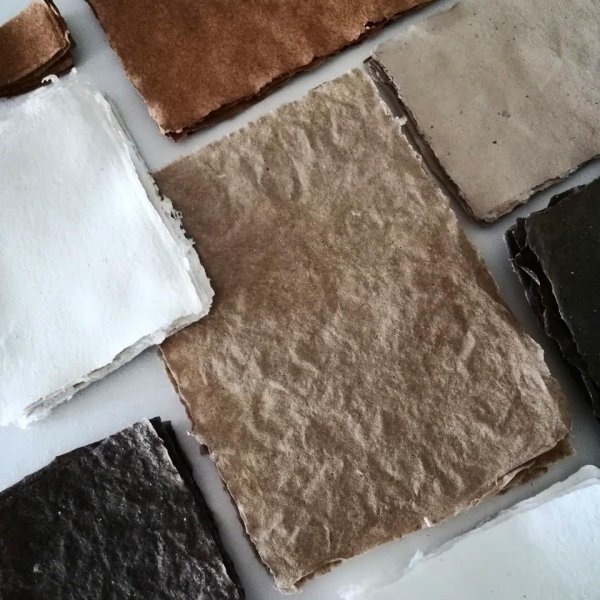Table of Contents
About TREE FREE PAPER:
The ultimate solution to save Trees and forests!
“if it’s not made from a tree, then it’s a better choice.”
The papermaking industry hurts more than just trees.
Wood Pulp Paper: A Big Footprint
When the trees are cut down and made into logs, it destroys critical wildlife habitat, leaves skid trails, sending mud and rocks into waterways, and contributes to erosion.
Trees that are cultivated for papermaking require fertilizers and herbicide and pesticide applications resulting in soil degradation.
DID you know this about Tree Free Paper !
The fifth Harry Potter book destroyed no forest at all—not even one tree. That’s because it was printed on 100% post-consumer recycled paper-saving not only trees but also water and energy and reducing pollution.
Paper – at least in a historical context – really didn’t have much to do with trees and forests until as recently as 1843.
But what if we could keep trees out of the loop altogether?
Do we have any better, more sustainable material we could use instead? Thankfully, the answer is yes—and these materials, known collectively as non-wood, alternative, or “tree-free” fibers.
Tree-free paper – how does that work?
The Egyptians made paper from papyrus and in recent years, the papermaking industry has been returning to its roots and exploring alternative fibres. Tree-free paper is all the rage.
Non-wood paper was derived almost exclusively from recycled textiles such as hemp, linen, and cotton. At Bluecat Paper we focus on creating tree free, handmade, recycled and, upcycled paper and paper products.
“Alternative fibers,” at least to us, is an interesting choice of words. Regardless, in the present-day alternative fibers are referred to as any non-wood fiber that can be used as material for paper and packaging.
Paper without deforestation – that is indeed possible! A new vision emerges
Yes, at Bluecat Paper we have achieved it! There are plentiful plants whose fibers are suitable for papermaking.
Our beautiful handmade paper is created using the fibers of cotton rags, linen rags, coffee husk, banana fiber, mulberry, corn husk, elephant poo, bagasse, vetiver grass, ragi, tea waste, and flax fiber to name a few.


From all these raw materials, our attractive eco- friendly paper is produced. It is obvious that these papers are not quite as cheap as paper from conventional production. This takes a lot of labour intensive work and time consuming.
If the consumption of sustainable paper is encouraged, then it is possible to achieve cheaper production cost.
We do not add chemicals. This, in turn, makes it easy for us to recycle water back into production. Yes, we don’t waste water at Bluecat Paper and we are certainly proud of it!!
We make Acid free paper using natural raw materials sourced from the vicinity of Bangalore. The alternative fiber materials that are also called “tree-free” and consist of fiber sources grown :
1) Agricultural Residues plant fibers (like rice stubble, elephant poo, flax, hemp, lemongrass, mulberry, coconut coir, banana, corn husk, bagasse, vetiver grass, ragi)
2) Industry Waste (like coffee husk, tea leaves, cotton rag).
Plant fibers are easier to pulp than wood-based fibers and therefore can be processed with less energy and water, as well as zero harmful chemicals are to be added. They are also referred to as “alternative fiber” for papermaking.
Tree free paper has both social and environmental value. This will have less impact on the forest, save trees, and divert agricultural residues from being burned.
Many things that Bluecat Paper uses to make paper (AND WHICH AREN’T TREES). The list below are some unexpected materials that we have already used to produce paper.
Handmade paper from Cotton and Linen Rags
The cotton and linen rags extracted from the textile industry produce a particularly strong type of paper and is combined with other fibres to make paper for calligraphy, card making and stationery. It is Perfect for screen printing.

The poo from your favourite herbivore
At Bluecat Paper we create from Elephant Poo. Elephant dung is a rich source of fiber and is naturally processed in the digestive tract of the elephant. As a result, a significant number of fibers remain intact and are perfect to turn into elephant poo paper.

Clean Paper from Plants other than trees
Even sugarcane, banana, lemon grass, corn husk, flax, coffee husk, tea leaves and hemp offer good-quality fibres, which are already used in commercial papers

Why Is Tree Free Paper So Important?
Tree free paper is an environmentally responsible option for use in the paper manufacturing industry. It goes without saying that tree free paper is eco friendly and sustainable.
Despite the ability to store information digitally, the demand for paper products is still high. The use of paper products isn’t set to decrease anytime soon.
As the demand is on the rise, it’s extremely important to create possible options for paper consumption, along with developing a plan to preserve sustainability and promote eco-friendly options for paper manufacturing.
It was one small step for the world’s dwindling forests, one giant leap for the paper gluttons humankind has become.
We save trees. Worldwide. With your earthy friendly choices, you can make it happen


